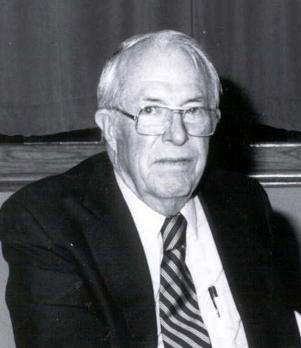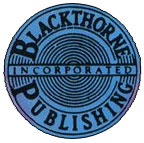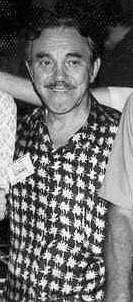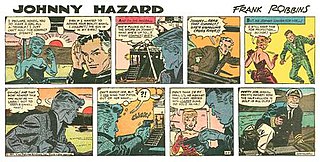
Dick Tracy is an American comic strip featuring Dick Tracy, a tough and intelligent police detective created by Chester Gould. It made its debut on Sunday, October 4, 1931, in the Detroit Mirror, and was distributed by the Chicago Tribune New York News Syndicate. Gould wrote and drew the strip until 1977, and various artists and writers have continued it.

Flash Gordon is the protagonist of a space adventure comic strip created and originally drawn by Alex Raymond. First published January 7, 1934, the strip was inspired by, and created to compete with, the already established Buck Rogers adventure strip.

Little Orphan Annie was a daily American comic strip created by Harold Gray and syndicated by the Tribune Media Services. The strip took its name from the 1885 poem "Little Orphant Annie" by James Whitcomb Riley, and it made its debut on August 5, 1924, in the New York Daily News.

John Stewart Williamson, who wrote as Jack Williamson, was an American science fiction writer, one of several called the "Dean of Science Fiction". He is also credited with one of the first uses of the term genetic engineering. Early in his career he sometimes used the pseudonyms Will Stewart and Nils O. Sonderlund.

The Spirit is a fictional masked crimefighter appearing in American comic books. Created by cartoonist Will Eisner, he first appeared as the main feature of a tabloid-sized comic book insert distributed in the Sunday edition of Register and Tribune Syndicate newspapers. Popularly referred to as "The Spirit Section", the insert ran from June 2, 1940 to October 5, 1952.

When Worlds Collide is a 1933 science fiction novel co-written by Edwin Balmer and Philip Wylie; they also co-authored the sequel After Worlds Collide (1934). It was first published as a six-part monthly serial in Blue Book magazine, illustrated by Joseph Franké.

Alfonso Williamson was an American cartoonist, comic book artist and illustrator specializing in adventure, Western, science fiction and fantasy.

Blackthorne Publishing Inc. was an American comic book publisher that flourished from 1986 to 1989. They were notable for the Blackthorne 3-D Series, their reprint titles of classic comic strips like Dick Tracy, and their licensed products. Blackthorne achieved its greatest sales and financial success with their licensed 3-D comics adaptations of the California Raisins, but the financial loss suffered by the failure of their 3-D adaptation of Michael Jackson's film Moonwalker was a major contributor to the publisher's downfall.

Secret Agent X-9 is a comic strip created by writer Dashiell Hammett and artist Alex Raymond. Syndicated by King Features, it ran from January 22, 1934 until February 10, 1996.

Samuel Maxwell "Jerry" Iger was an American cartoonist and art-studio entrepreneur. With business partner Will Eisner, he co-founded Eisner & Iger, a comic book packager that produced comics on demand for new publishers during the late-1930s and 1940s period known to fans and historians as the Golden Age of Comic Books.

Lee Elias was a British-American comics artist. He was best known for his work on the Black Cat comic book published by Harvey Comics in the 1940s.
Sky Masters of the Space Force was an American syndicated newspaper comic strip created on September 8, 1958, by writer/penciler Jack Kirby and writer Dave Wood, featuring the adventures of an American astronaut. The strip stars the titular Major Skylar Masters—an American astronaut—and features his adventures in a fictionalized Space Race, including rocket launches, space stations, Moon landings, and double agents.
The Alley Award was an American annual series of comic book fan awards, first presented in 1962 for comics published in 1961. Officially organized under the aegis of the Academy of Comic Book Arts and Sciences, the award shared close ties with the fanzine Alter Ego magazine. The Alley is the first known comic book fan award.

Reg'lar Fellers is a long-running newspaper comic strip adapted into a feature film, a radio series on the NBC Red Network, and two animated cartoons. Created by Gene Byrnes (1889–1974), the comic strip offered a humorous look at a gang of suburban children. Syndicated from 1917 to January 18, 1949, Byrnes' strip was collected into several books. Branding also extended to such items as baseball bats and breakfast cereal.

Tarzan, a fictional character created by Edgar Rice Burroughs, first appeared in the 1912 novel Tarzan of the Apes, and then in 23 sequels. The character proved immensely popular and quickly made the jump to other media, including comics.

The Seetee series is a golden age science fiction series by the American writer Jack Williamson, under the pseudonym "Will Stewart."

Woodrow Gelman was a publisher, cartoonist, novelist and an artist-writer for both animation and comic books. As the publisher of Nostalgia Press, he pioneered the reprinting of vintage comic strips in quality hardcovers and trade paperbacks. As an editor and art director for two-and-a-half decades at Topps Chewing Gum, he introduced many innovations in trading cards and humor products.

Johnny Hazard is an action-adventure comic strip created by cartoonist Frank Robbins for King Features Syndicate. It was published from June 5, 1944, until August 20, 1977, with separate storylines for the daily strip and the Sunday strip.

Buck Rogers is a science fiction adventure hero and feature comic strip created by Philip Francis Nowlan first appearing in daily U.S. newspapers on January 7, 1929, and subsequently appearing in Sunday newspapers, international newspapers, books and multiple media with adaptations including radio in 1932, a serial film, a television series, and other formats.
Library of American Comics is an American publisher of classic American comic strips collections and comic history books, founded by Dean Mullaney and Bruce Canwell in 2007.


















